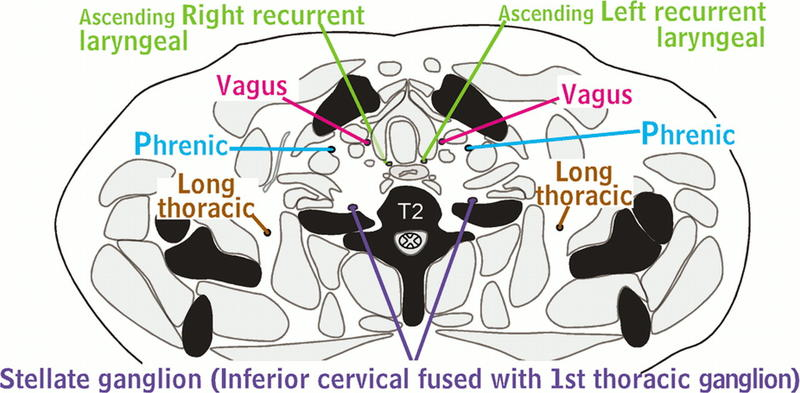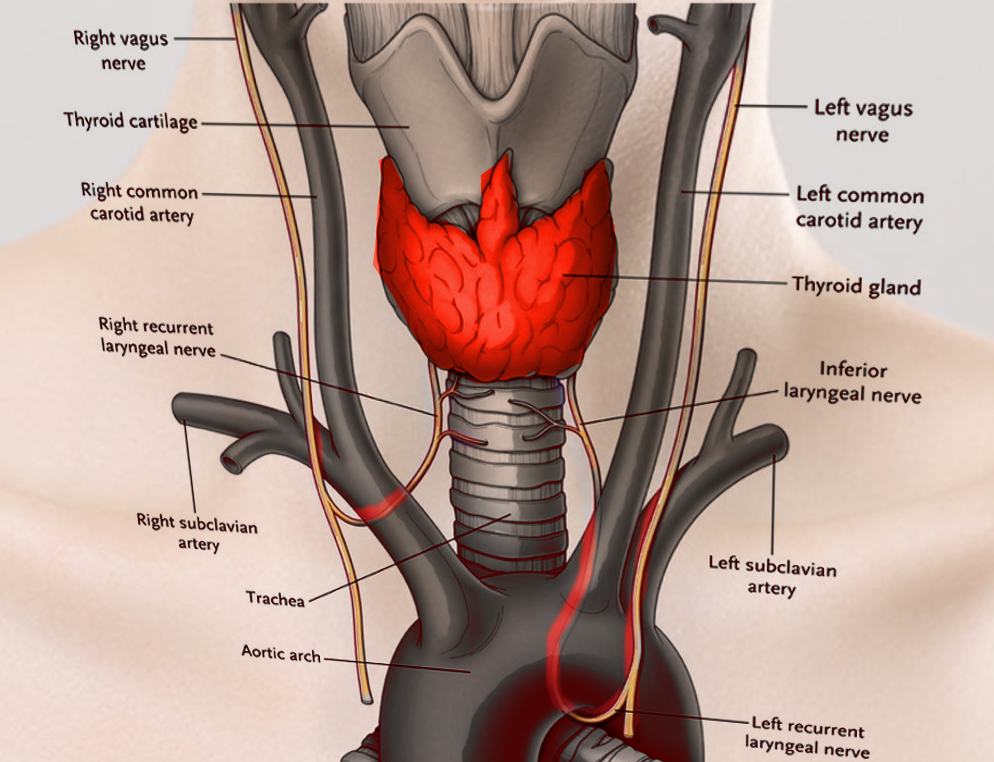[1]
Yin C, Song B, Wang X. Anatomical Variations in Recurrent Laryngeal Nerves in Thyroid Surgery. Ear, nose, & throat journal. 2021 Dec:100(10_suppl):930S-936S. doi: 10.1177/0145561320927565. Epub 2020 Jun 4
[PubMed PMID: 32493053]
[2]
Orestes MI, Chhetri DK. Superior laryngeal nerve injury: effects, clinical findings, prognosis, and management options. Current opinion in otolaryngology & head and neck surgery. 2014 Dec:22(6):439-43. doi: 10.1097/MOO.0000000000000097. Epub
[PubMed PMID: 25136863]
Level 3 (low-level) evidence
[4]
Uludag M, Aygun N, Kartal K, Besler E, Isgor A. Innervation of the human posterior cricoarytenoid muscle by the external branch of the superior laryngeal nerve. Head & neck. 2017 Nov:39(11):2200-2207. doi: 10.1002/hed.24896. Epub 2017 Aug 17
[PubMed PMID: 28815834]
[5]
Chrysikos D, Sgantzos M, Tsiaoussis J, Noussios G, Troupis T, Protogerou V, Spartalis E, Triantafyllou T, Mariolis-Sapsakos T. Non-Recurrent Right Laryngeal Nerve: a Rare Anatomic Variation Encountered During a Total Thyroidectomy. Acta medica (Hradec Kralove). 2019:62(2):69-71. doi: 10.14712/18059694.2019.105. Epub
[PubMed PMID: 31362813]
[6]
Allen E, Minutello K, Murcek BW. Anatomy, Head and Neck, Larynx Recurrent Laryngeal Nerve. StatPearls. 2024 Jan:():
[PubMed PMID: 29261997]
[7]
McCullagh KL, Shah RN, Huang BY. Anatomy of the Larynx and Cervical Trachea. Neuroimaging clinics of North America. 2022 Nov:32(4):809-829. doi: 10.1016/j.nic.2022.07.011. Epub
[PubMed PMID: 36244725]
[8]
Prabhu S, Mehra S. Nothing unusual: bilateral recurrent laryngeal nerves have followed the rule. Surgical and radiologic anatomy : SRA. 2021 Apr:43(4):613. doi: 10.1007/s00276-020-02571-y. Epub 2020 Sep 18
[PubMed PMID: 32945905]
[9]
Prabhu S, Mehra S, Kasturi S, Tiwari R, Joshi A, John C, Karl TR. Anatomic classification of the right aortic arch. Cardiology in the young. 2020 Nov:30(11):1694-1701. doi: 10.1017/S1047951120003601. Epub 2020 Oct 28
[PubMed PMID: 33109287]
[10]
Ortega C, Maranillo E, McHanwell S, Sañudo J, Vázquez-Osorio T. External laryngeal nerve landmarks revisited. Head & neck. 2018 Sep:40(9):1926-1933. doi: 10.1002/hed.25186. Epub 2018 Apr 23
[PubMed PMID: 29684240]
[11]
Obaid T, Kulkarni N, Pezzi TA, Turkeltaub AE, Pezzi CM. Coexisting right nonrecurrent and right recurrent inferior laryngeal nerves: a rare and controversial entity: report of a case and review of the literature. Surgery today. 2014 Dec:44(12):2392-6. doi: 10.1007/s00595-013-0800-5. Epub 2013 Nov 30
[PubMed PMID: 24292653]
Level 3 (low-level) evidence

